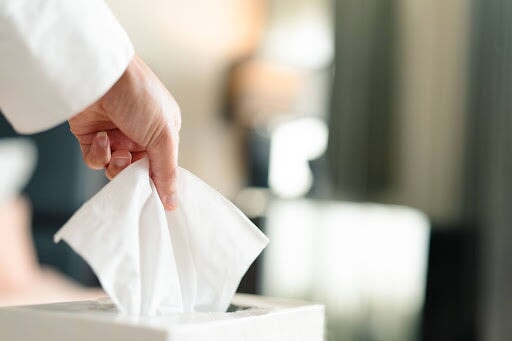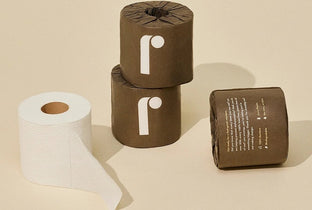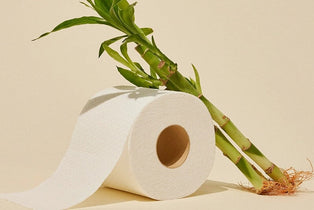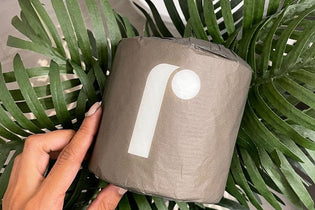
TLDR
When you reach for that soft tissue to wipe away a tear or to stave off a sneeze, do you ever ponder where it came from and where it will end up? In our modern, fast-paced world, the environmental footprint of seemingly insignificant everyday items like tissues is often overlooked.
However, in a climate-aware society, it's crucial to ask: Are tissues biodegradable and eco-friendly? This exploration is not just about understanding the life cycle of a humble piece of tissue paper but also about uncovering the layers of impact it has on our planet. By shedding light on these issues, we can start to make more environmentally conscious decisions that align with a commitment to preserving our world for future generations.
The Environmental Impact of Tissues
Tissues are a staple in households worldwide, offering convenience at the slightest sneeze or spill. However, this everyday essential carries a less visible cost—the environmental toll of its production and disposal.
The Origin of Tissue Paper
The path that tissue paper takes to reach our homes is more complex than one might imagine. Originally sourced from the bounteous woods, the virgin tree pulp that makes up the majority of tissue papers on the market comes with a hefty environmental price tag. The conversion from sturdy trees to soft paper involves extensive resources, from water to energy, leaving a considerable ecological footprint.
What Makes a Tissue Biodegradable?
The question of whether a tissue can be considered biodegradable hinges on the materials used and the processes it undergoes after disposal. Here, we’ll unravel the science that dictates a tissue's journey back to the earth, exploring what sets biodegradable tissues apart from their non-biodegradable counterparts and why this distinction is critical for our environment.
The Science Behind Biodegradability
Microbes are the unsung heroes when it comes to breaking down biodegradable tissues. These tiny organisms feast on organic materials, transforming them back into earth-friendly compounds. Biodegradable tissues are specifically designed to disintegrate efficiently in the environment, unlike their regular counterparts that may linger for years, contributing to post-consumer waste build-up.
The Benefits of Biodegradable Tissues
Opting for biodegradable tissues is more than just a personal choice; it's a step towards a more sustainable future. These tissues break down more quickly, reducing the burden on landfills and contributing to a healthier ecosystem. Furthermore, choosing biodegradable options encourages manufacturers to invest in environmentally friendly production processes, effectively supporting the industry's shift towards greener practices. This also paves the way for innovations that can further enhance the biodegradability and environmental friendliness of paper products.
Tissue Paper and the Environment
As tissue paper remains a ubiquitous part of our daily lives, from the bathroom to the dinner table, its convenience also continues to mask a deeper environmental dilemma. There is a significant environmental footprint left by single-use tissue papers, and their production and disposal contribute to larger issues such as deforestation and landfill waste as well.
The Problem with Single-Use
Every single-use tissue that is disposed of adds to the mounting environmental toll. This practice isn't just a matter of waste; it's also intrinsically linked to larger issues such as deforestation and the unsustainable use of natural resources, making the need for alternatives like recycled toilet paper and recycled facial tissues more pressing than ever.
Recycling and Composting Tissues
Although tissues are largely used for personal hygiene, their afterlife in the realm of recycling and composting is quite complex. The reality is that most facial tissues are not recyclable due to contamination from bodily fluids and oils. However, there’s potential in composting biodegradable tissue, with caveats that it must be free from harmful chemicals and used for appropriate waste only.
Eco-Friendly Alternatives to Traditional Tissues
As awareness about environmental sustainability grows, consumers and manufacturers alike are seeking eco-friendly alternatives to traditional tissue products. This pursuit has sparked innovation, giving rise to a variety of sustainable options that promise to reduce our ecological footprint without compromising on quality or convenience. These alternatives are not just kinder to the environment but also exemplify the changes that can occur when environmental stewardship is embraced in product design and consumer habits.
The Rise of Recycled Tissues
Recycled tissues offer a ray of hope in this bleak scenario. By repurposing paper and packaging waste into new products, companies can significantly cut down the number of trees being felled for tissue production. Reel recycled paper towels and facial tissues are a testament to the benefits of this approach, combining environmental responsibility with everyday convenience.
Bamboo Tissues: A Greener Alternative
Bamboo is a shining star in the world of sustainable resources. As a fast-growing plant, it offers a viable and eco-friendly alternative to traditional tree-based tissues. Reel Paper, for instance, harnesses the power of bamboo to create our bamboo toilet paper, which stands as a superior, greener choice compared to conventional wood pulp-based products.
Making Informed Choices for a Greener Tomorrow
In the face of a rapidly changing climate and dwindling natural resources, making informed choices has never been more critical for ensuring a sustainable future. As consumers, we hold immense power in influencing the market and encouraging greener practices through the products we choose to buy. By educating ourselves and making mindful selections, we can all contribute to a healthier planet and a brighter tomorrow.
The Toxicity Concern in Tissues
Often hidden amidst the soft folds of tissue paper are chemicals that could pose potential health risks. As consumers, checking labels for harmful chemicals and opting for safer, eco-friendly tissue paper becomes not just a personal health choice but an act of environmental responsibility. From production to disposal, eco-friendly tissue keeps the risk of harmful chemicals at zero.
The Role of Consumers in Driving Change
Consumers hold substantial sway in the marketplace; their buying habits can dictate industry trends and priorities. By consciously selecting eco-friendly tissue products, customers can send a powerful message to producers about the importance of sustainable living practices. This collective consumer push for greener options can lead to a significant shift, encouraging companies to not only meet but also exceed environmental standards, thus fostering a culture of responsibility and innovation in tissue production.
Reel Paper: Leading the Way in Sustainable Tissue Production
In a market saturated with choices, Reel Paper stands out by offering products that are not only sustainable but also sensitive to consumer needs. Our recycled facial tissues are crafted for both the environment and for sensitive skin, ensuring that while consumers care for themselves, they're also caring for the planet.
Indeed, the shift to biodegradable, recycled, and bamboo tissues is more than just a trend; it's a necessary step towards sustainability. As we delve deeper into the eco-friendly attributes of products and the practices of companies like Reel Paper, it becomes clear that every tissue pulled from a box or roll is a chance to make a positive impact. So next time you use a tissue, let it be a choice that reflects not only personal hygiene but also environmental hygiene.




0 comments